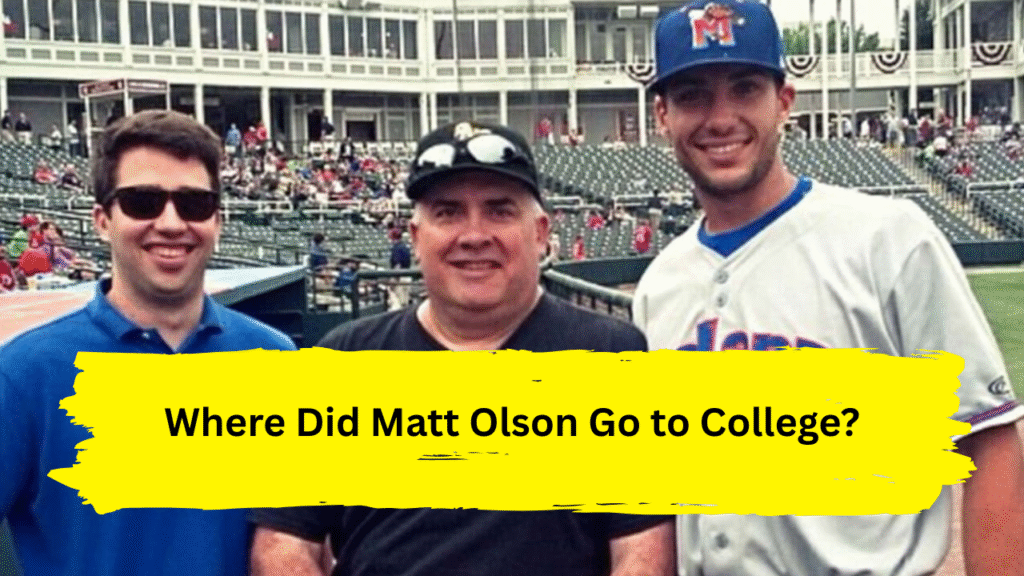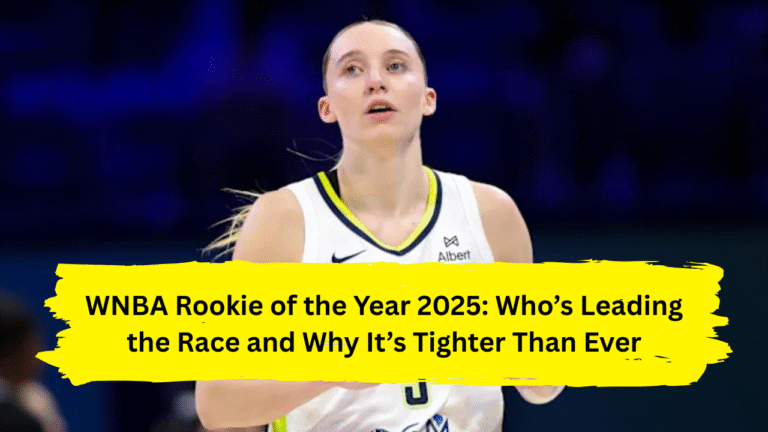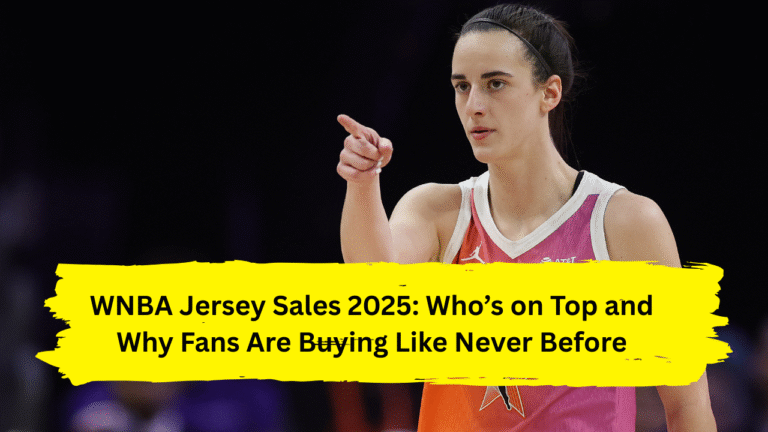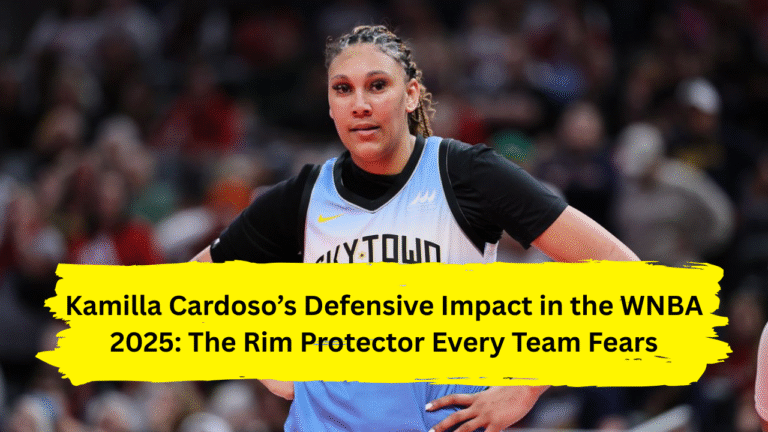
You might assume every MLB superstar honed their skills in packed college stadiums before going pro. But Matt Olson’s journey to becoming the Atlanta Braves’ record-smashing first baseman took a radically different turn—one that redefines what it means to choose between classrooms and cleats. Spoiler: He never wore a college jersey. Instead, Olson’s “education” unfolded on dusty minor-league fields, transforming a high school phenom into a $168 million franchise cornerstone. Let’s unravel why Olson’s road less traveled proves that sometimes, the best classrooms have no walls .
The Georgia Prodigy: Parkview High’s Unforgettable Legacy
Long before Truist Park crowds roared his name, Matt Olson was shattering records at Parkview High School in Lilburn, Georgia. Under coach Chan Brown’s guidance, Olson didn’t just play—he dominated. Imagine a .431 career batting average, 45 home runs, and 168 RBIs, all while leading the Panthers to back-to-back state championships in 2011 and 2012 . His fastball terrorized hitters too, resulting in a jaw-dropping 28 pitching wins and a 1.64 ERA as a senior .
Olson’s athleticism was obvious, but his intellect sealed his destiny. Graduating with honors, he faced a life-altering choice: honor his commitment to Vanderbilt University’s elite baseball program or leap straight into professional baseball after the 2012 MLB Draft. His number 21 jersey now hangs retired at Parkview—a tribute to a legacy so profound, even Braves legend Jeff Francoeur (another Parkview alum) playfully debates who owned the school’s greatest career .
The Vanderbilt Commitment That Never Was
Here’s where Olson’s story defies expectation: Yes, he committed to Vanderbilt—but he never stepped foot on campus as a student-athlete. As a top national prospect, Olson had accepted an offer to join the Commodores, envisioning himself as a two-way player (first baseman and pitcher) under coach Tim Corbin. Vanderbilt’s pedigree was undeniable: a pipeline to the majors, SEC glory, and a fallback via world-class academics .
But fate intervened on draft day 2012. The Oakland Athletics selected Olson in the first round (47th overall), offering a $1,079,700 signing bonus. Suddenly, the calculus shifted. Why risk injury or stalled development in college when scouts saw “big power potential” and a swing graceful enough to homer off elite prep pitchers like Max Fried? Olson’s family and advisors weighed every angle. His brother Zack, then a Harvard pitcher, understood the stakes. Ultimately, Olson chose the minors—a decision that stunned the Georgia baseball scene but aligned with his readiness for pro ball .
Education Outside the Classroom: Olson’s Minor League University
Olson’s real “college” began in rookie ball with the Arizona League Athletics. Forget frat parties and finals; his curriculum included mastering sinkers in 110-degree heat and surviving 14-hour bus rides. In 2013, with the Beloit Snappers, he struggled (.225 average) but mashed 23 homers—a lesson in perseverance .
His breakthrough came in 2014 with the Stockton Ports. Olson led all minor leaguers in walks (18.5% walk rate) while crushing 37 homers with a .543 slugging percentage. This wasn’t just talent; it was adaptation. As Baseball America noted, his “knack for finding the barrel” and “low-maintenance swing” evolved under the pressures of full-season ball. Unlike college athletes facing periodic midweek games, Olson competed nearly every day for six months—a grueling education that forged his plate discipline and defensive prowess .
The Alumni Network of Grassroots Mentorship
Who were Olson’s “professors”? Legendary figures like Scott Olson, his dad and first coach, who preached resilience: “Go the extra mile.” Teammates like Jack Esmonde, Parkview’s pitching ace, who witnessed Olson’s flair for the dramatic—like seventh-inning homers to clinch state titles. Even Jeff Francoeur became an informal advisor, sharing wisdom about life under Atlanta’s spotlight .
This mentorship extended into pro ball. When Olson debuted with Oakland in 2016, veterans like Stephen Vogt (who wore Olson’s preferred No. 21) taught him clubhouse codes. Olson later switched to 28 as a tribute—a number he kept in Atlanta. These relationships offered something no college program could replicate: immersion in the business of baseball, where slumps meant demotions and hot streaks meant waking up in unknown cities .
The Degree in Durability: A Big-League Thesis
Olson’s unconventional path crystallized his greatest skill: relentless availability. Since 2018, he’s played every game in four different seasons—a feat virtually unheard of in modern baseball. In 2023 alone, his 54 homers and 139 RBIs set Braves records, earning him an All-Star nod and Silver Slugger Award. How? The stamina forged through 662 minor-league games before his 2016 call-up .
College might have sheltered Olson from 162-game marathons. Instead, his “minor league university” taught him to thrive when exhausted—a lesson that paid $168 million when the Braves acquired him in 2022. As Olson told The Athletic, “I’ve heard stories about that Wiffle Ball over the house when I was four. Maybe some things are just meant to be.” His parents, Scott and Lee, never pushed him toward Vanderbilt; they trusted his instincts. That faith built a swing that’s now the terror of the NL East .
The Bottom Line
Where did Matt Olson go to college? Nowhere. And it’s the smartest decision he never made. Olson’s story isn’t just about baseball—it’s about recognizing that greatness rarely follows a template. For every kid torn between college commitments and draft dreams, remember: Olson’s classroom was the batter’s box. His exams were ninth-inning fastballs. And his diploma? A Silver Slugger trophy gleaming beside a World Series ambition.
So whether you’re swinging for the fences or choosing your own path, let Olson’s journey remind you: Education isn’t confined to campuses. Sometimes, it’s written in the dirt of a minor-league infield, waiting for your cleats to leave their mark .
Also Read: Latest Trending News




